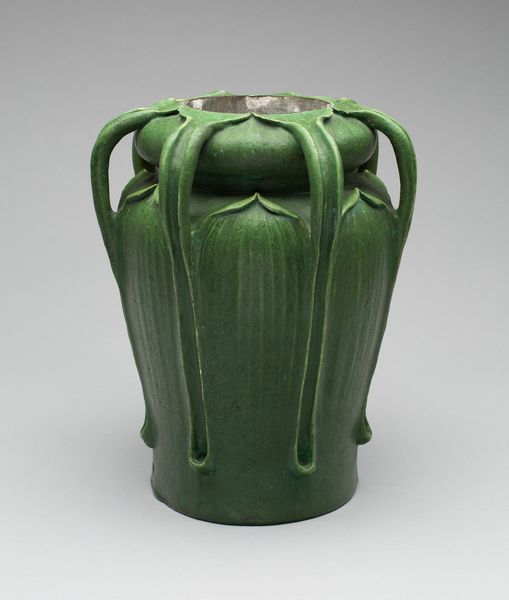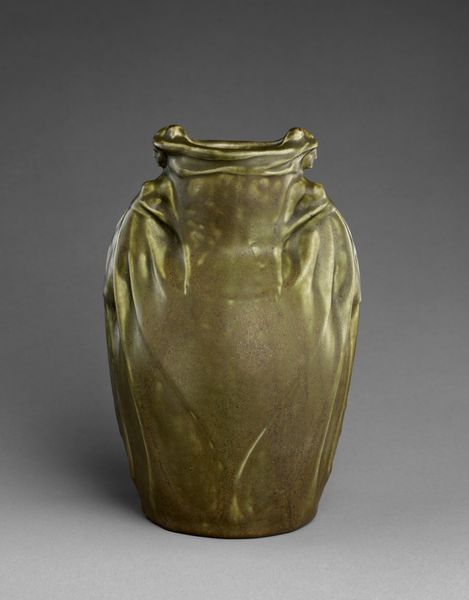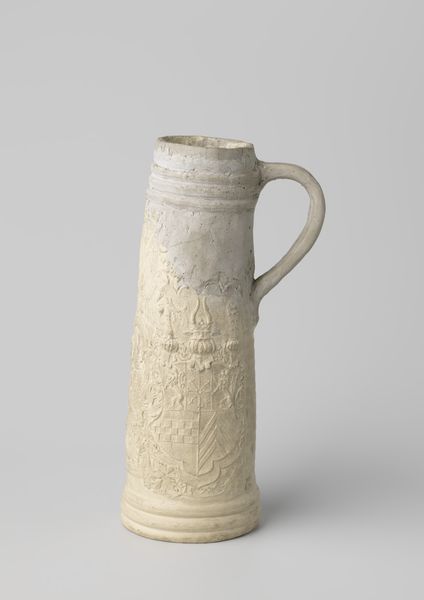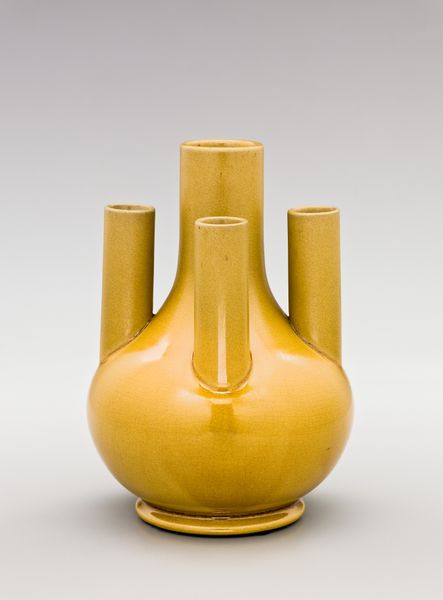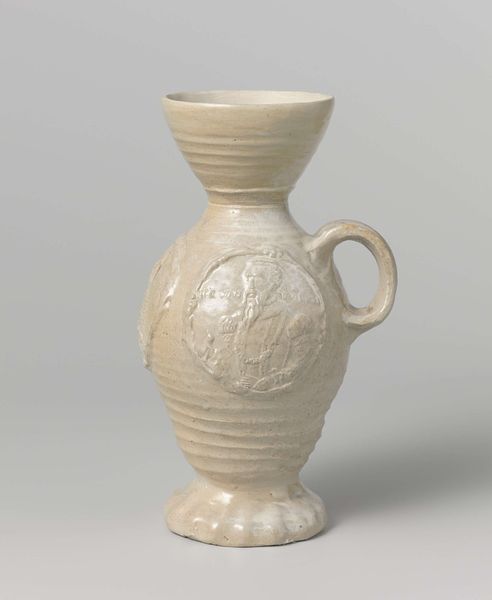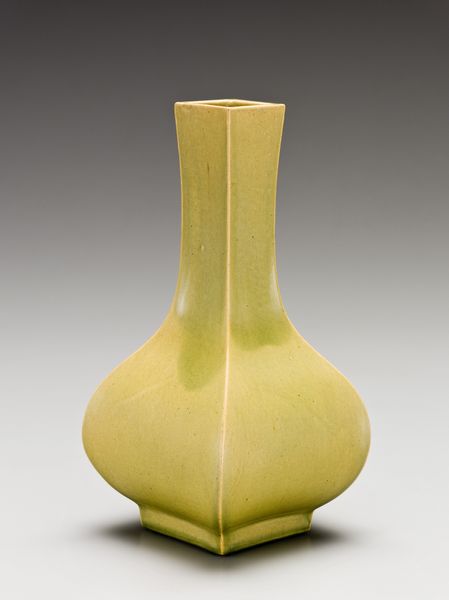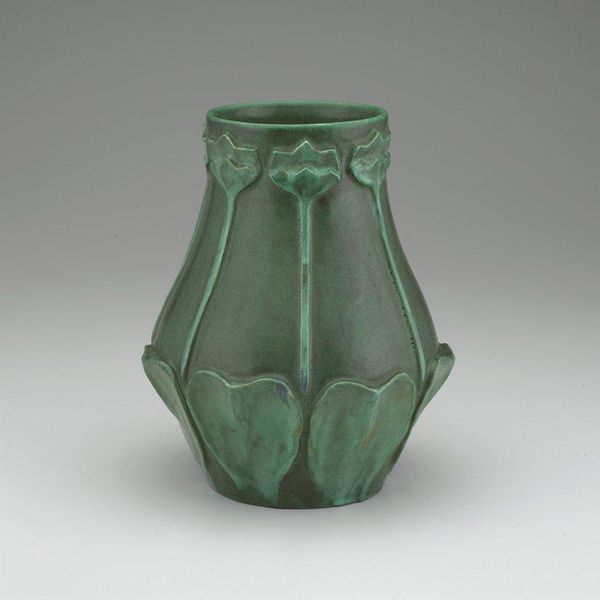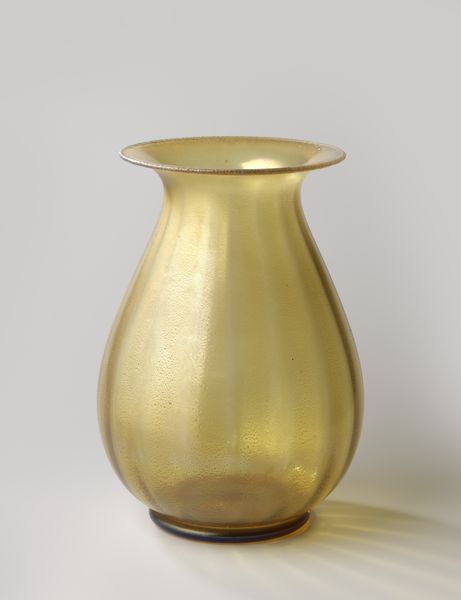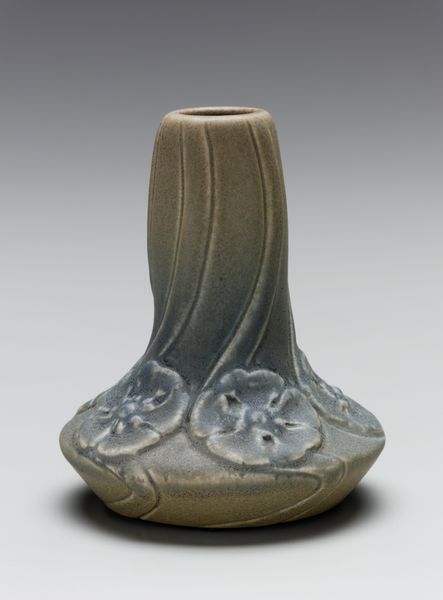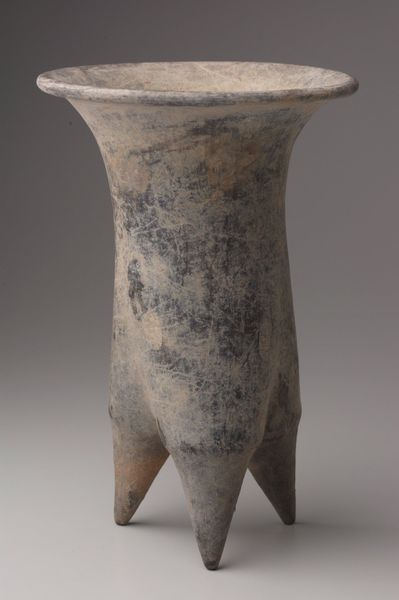
ceramic, sculpture
#
organic
#
art-nouveau
#
ceramic
#
form
#
sculpture
#
decorative-art
Dimensions: H. 11 in. (27.9 cm); Diam. 6 in. (15.2 cm)
Copyright: Public Domain
Curator: Before us stands a ceramic vase, crafted by the Grueby Faience Company between 1899 and 1910. You can currently find it residing at the Metropolitan Museum of Art. Editor: It possesses a rather austere beauty. The color evokes aged parchment, and those vertical lines...they impart a quiet dignity to its form. Curator: The lines you perceive are part of a larger formal vocabulary rooted in the Art Nouveau movement. Observe how those stylized, attenuated shapes attempt to mimic organic forms. It's a deliberate abstraction, reducing natural elements to their barest geometrical essence. Editor: Precisely! It’s not a direct representation of flora, but more of an echo. Those curling handles… they feel like nascent tendrils reaching skyward, perhaps an allegory of growth or aspiration. Curator: And note the matte glaze, a signature element of Grueby’s production. It diffuses light, emphasizing the object’s contours rather than any surface ornamentation. Editor: It lends the piece an air of quiet contemplation, doesn't it? The symbolism lies in its ability to transform the mundane—a vessel—into something resonant with nature and symbolic suggestion. This piece offers a sense of tranquility and controlled natural energy; it evokes memories of classical forms filtered through the aesthetic of the Arts and Crafts movement. Curator: Indeed, the success here resides in that careful balancing act. By uniting natural motifs with simplified form, the anonymous maker provides this “Vase” with significant symbolic power. Editor: What a splendid encapsulation of fin-de-siècle longings. Curator: Agreed, it demonstrates the eternal dialogue between function and spirit, editor.
Comments
No comments
Be the first to comment and join the conversation on the ultimate creative platform.
